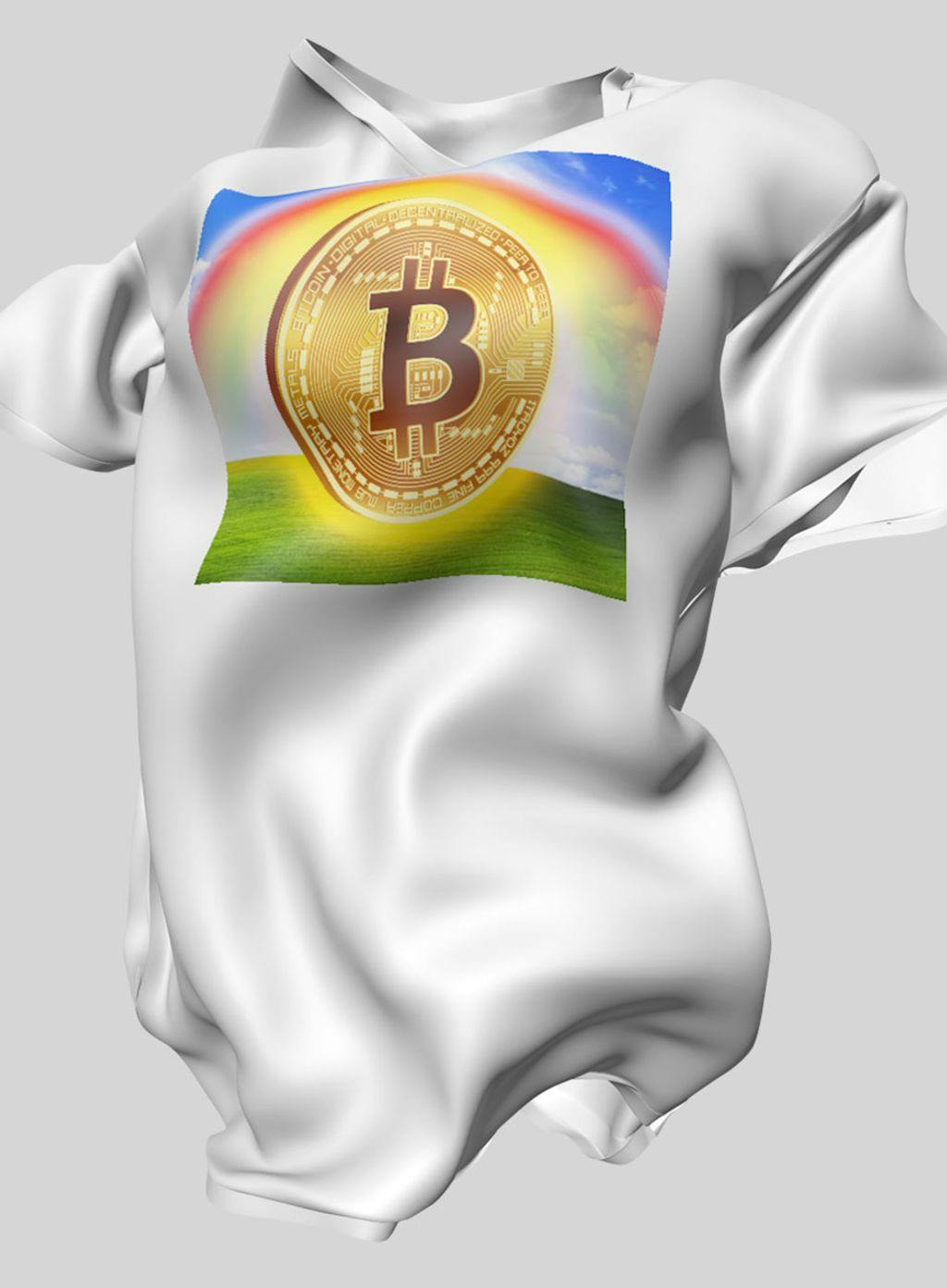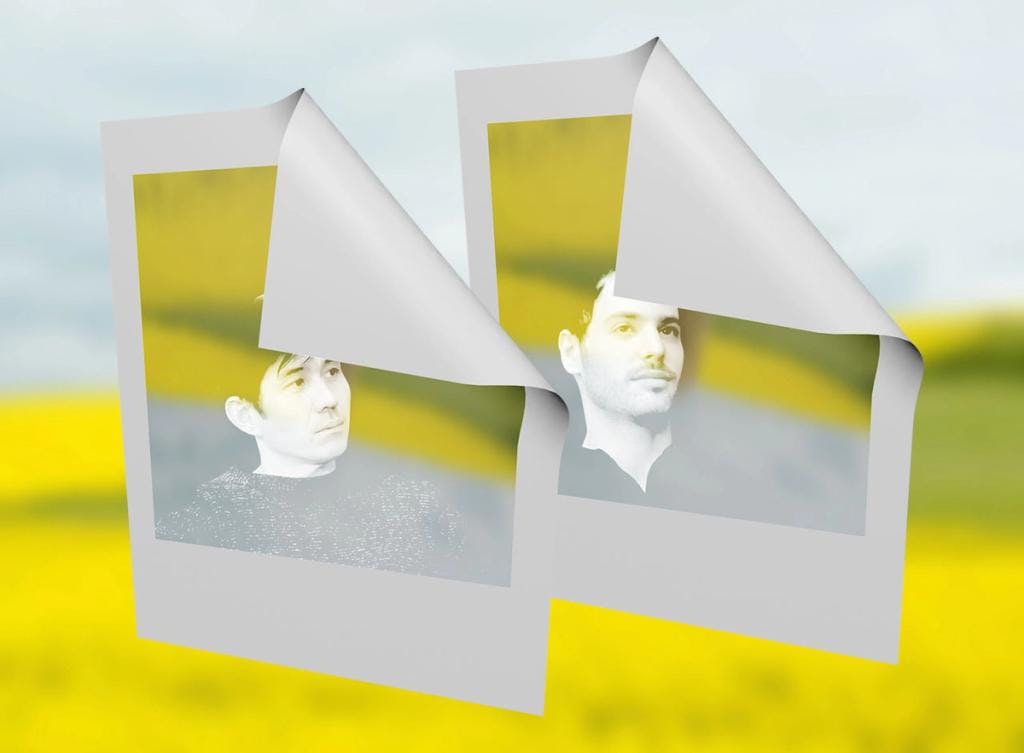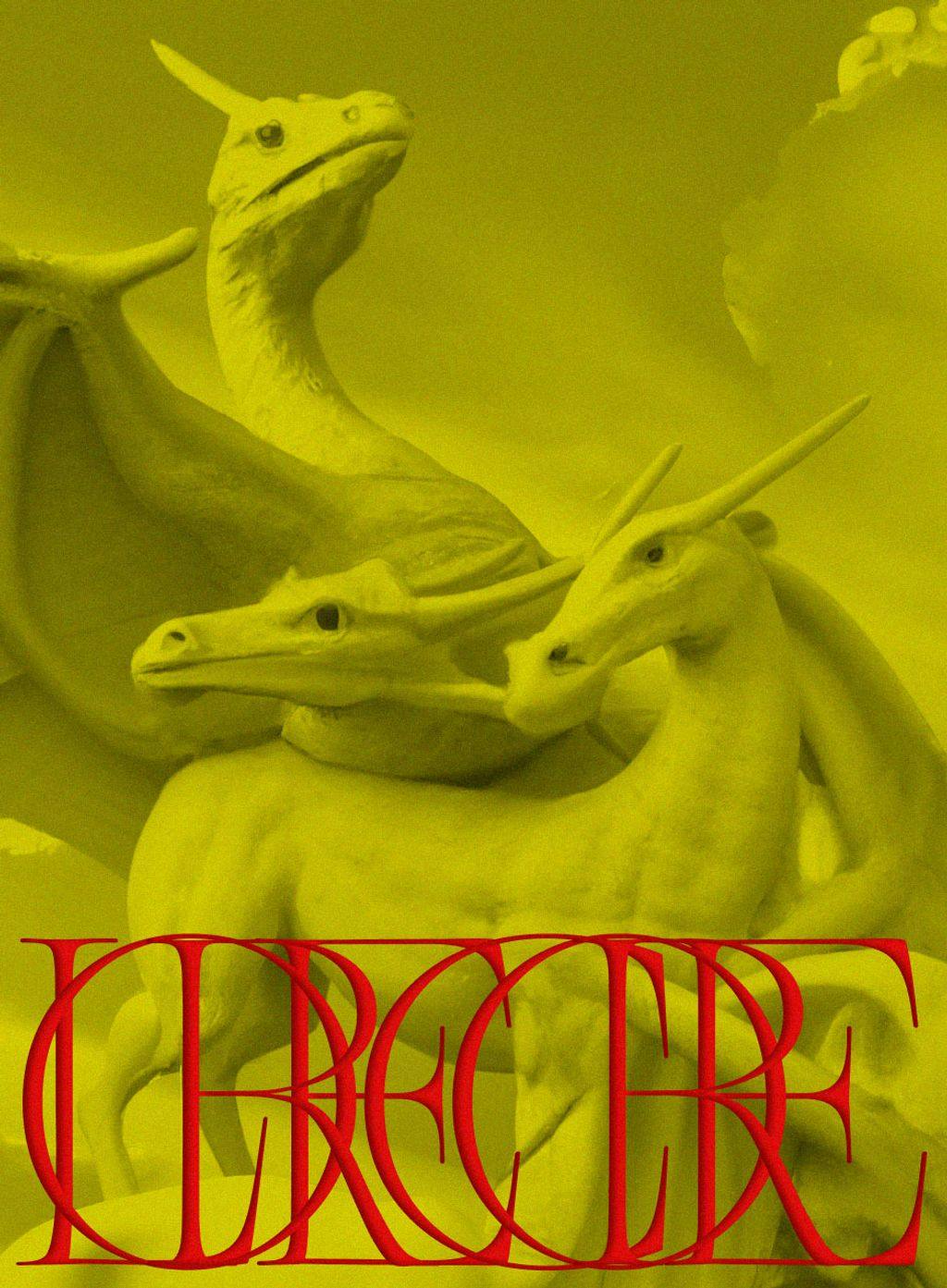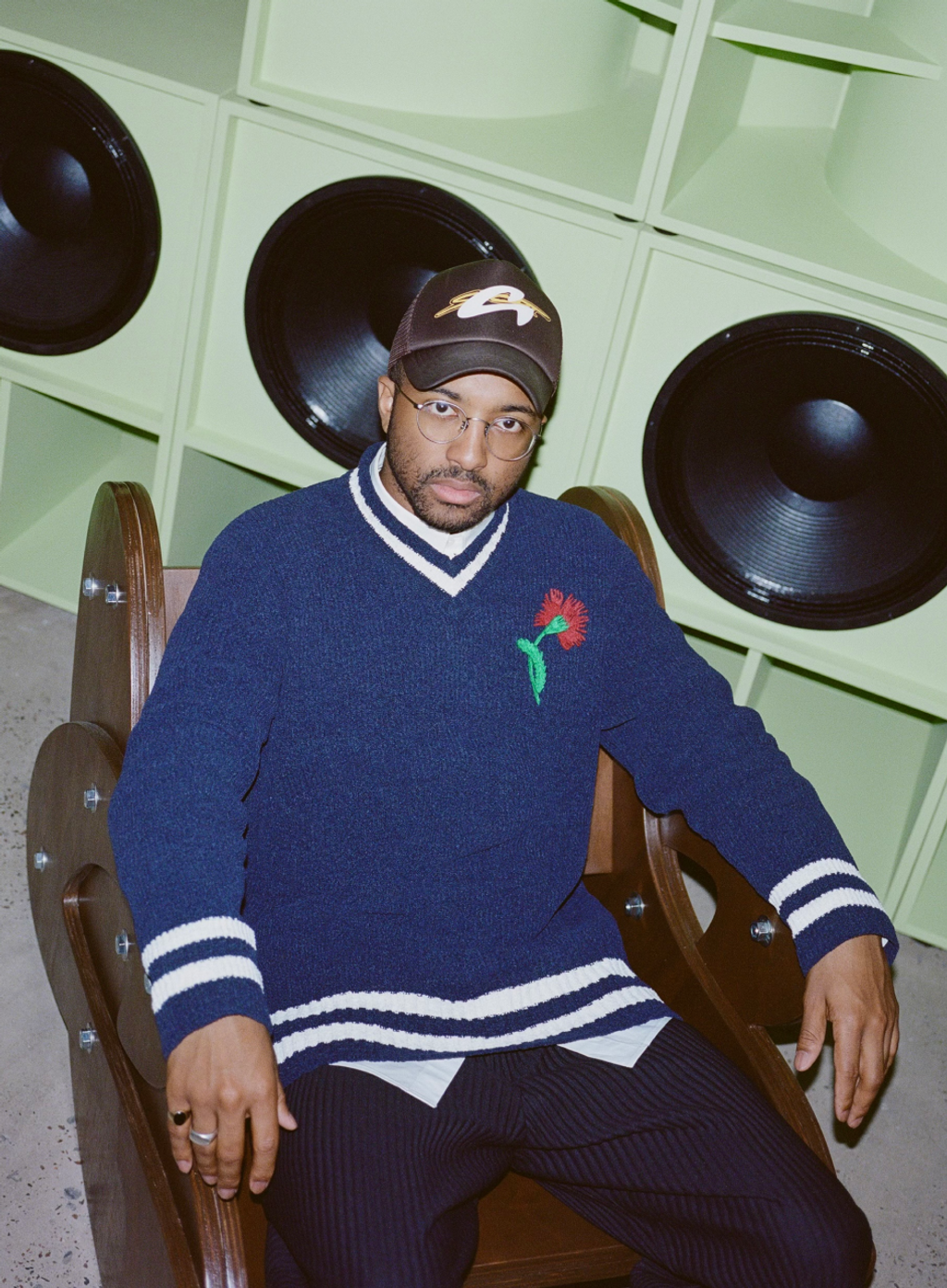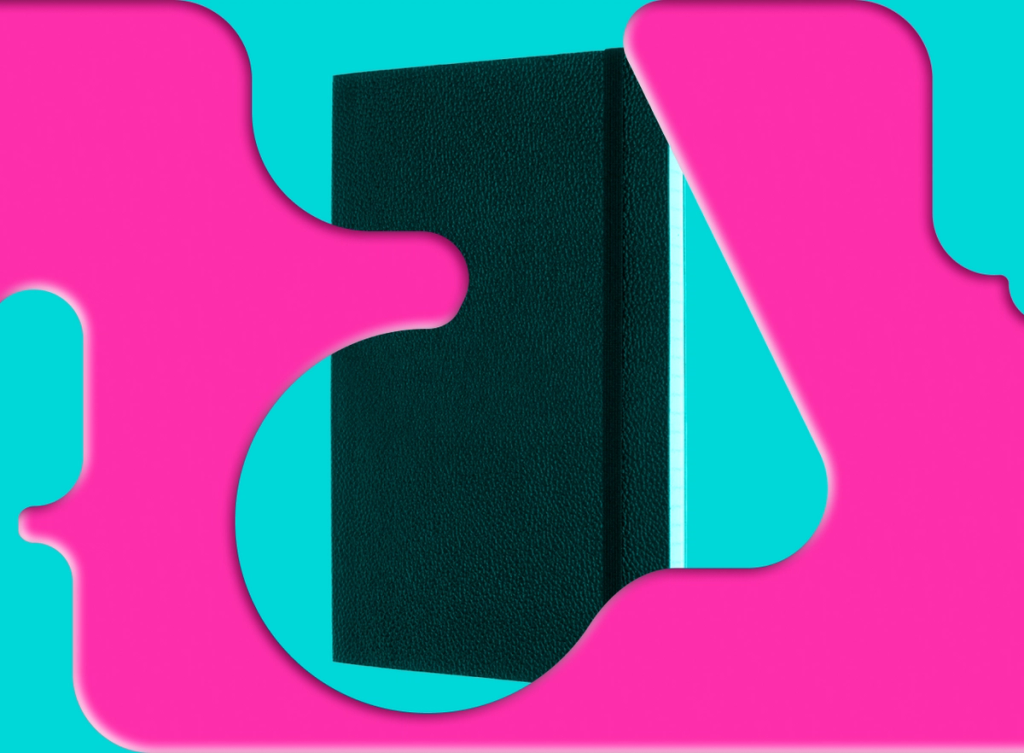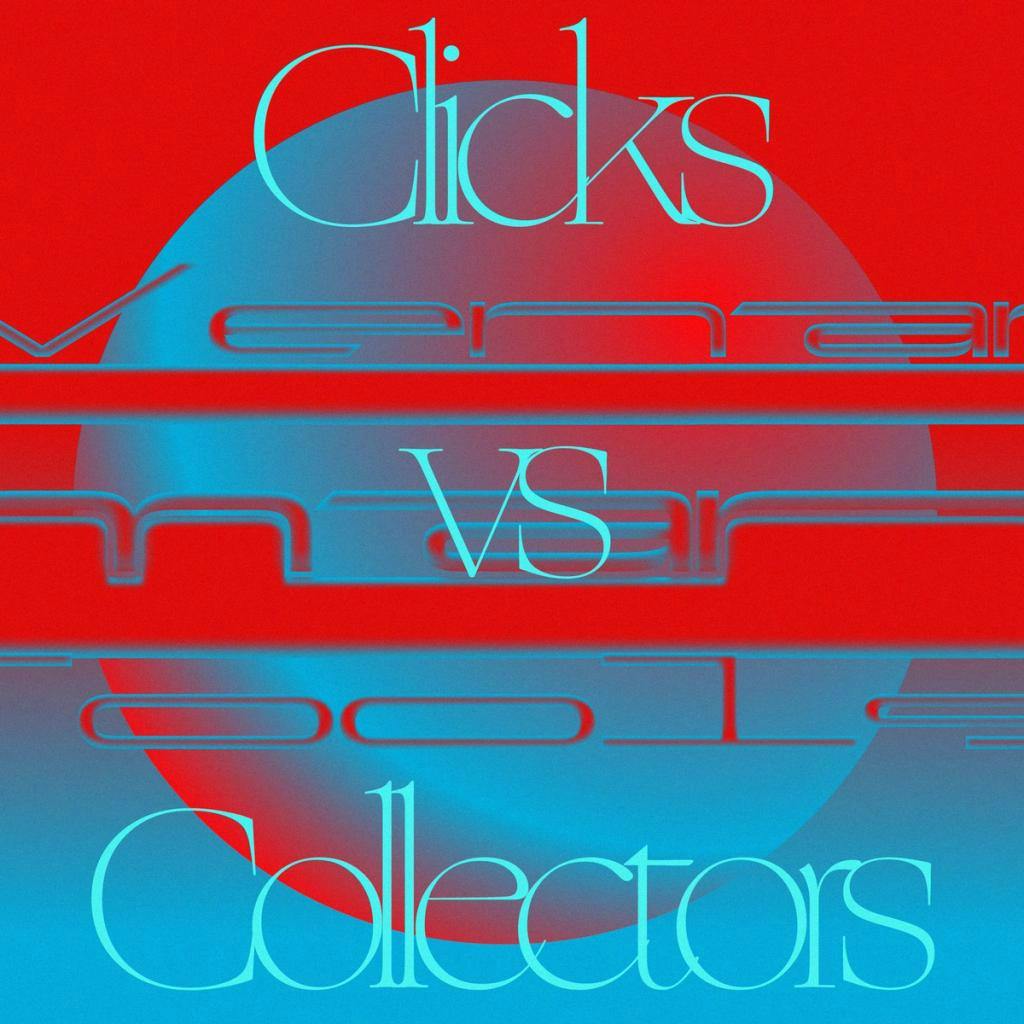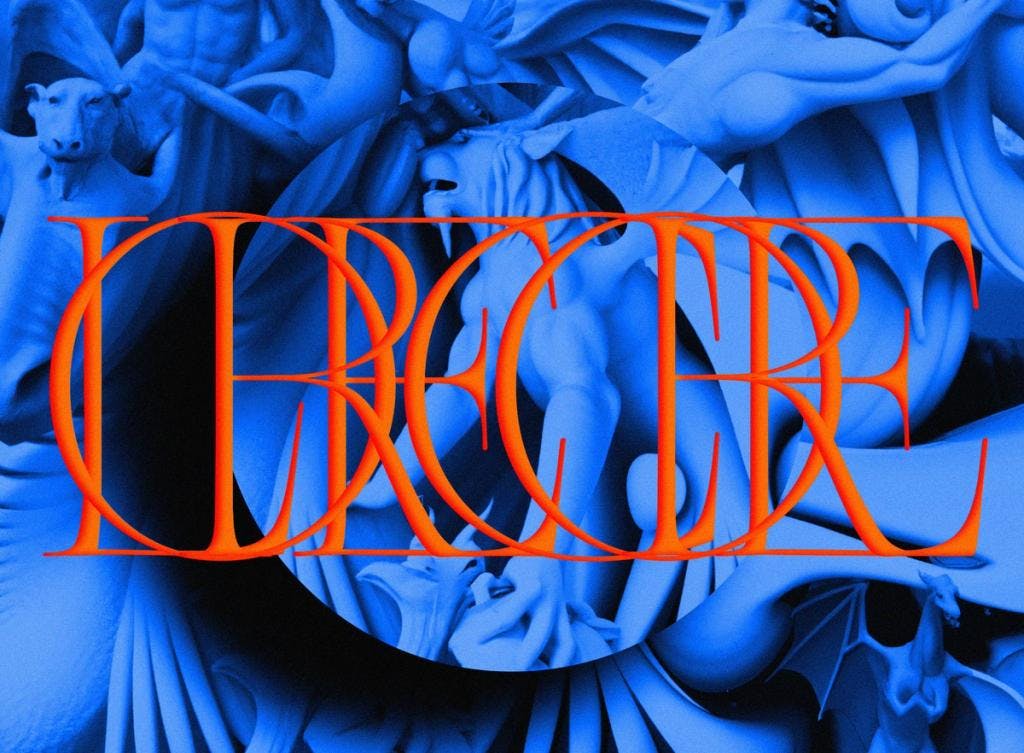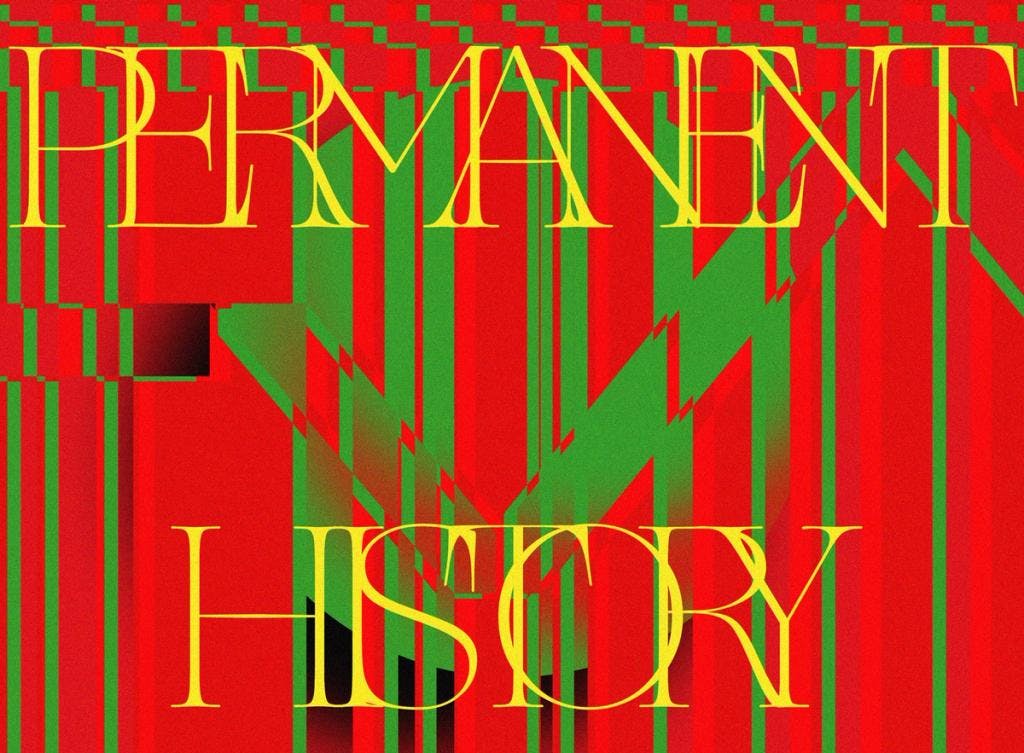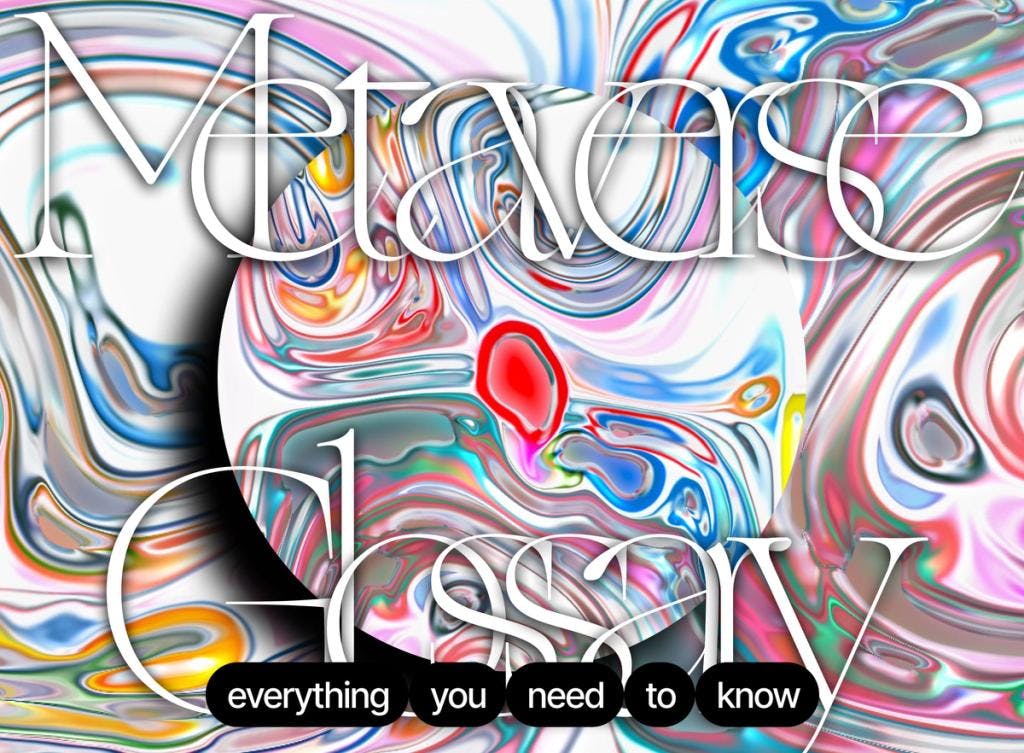


NinaProtocol:PlatformAgnosticPublishing,ActiveListening
Nina Protocol: Platform Agnostic Publishing, Active Listening
If “lean back and listen” is the paradigm for music discovery, then “cratedigging” is Nina Protocol’s future alternative
The earth is spinning faster. Our social lives, professional personae, and Twitter handles are blending together quicker than a Vitamix on Vyvanse. Deciding what to watch, read, or listen to requires knowledge, conviction, and—most importantly—time. Time no longer feels like an invisible constant but a brooding thief. With too little time and too much information, we not only succumb to the algorithmic authority of a streaming service recommendation, we crave it.
Content recommenders play a subtle but important role in the constant competition for our fractured attention, affecting dopamine and cortisol levels as much as the receipt of a push notification or hit from a Lush Ice vape. The tools we use to “discover” new media are designed to distract and addict us; the endless nature of a discovery playlist creates an experience of abundance that triggers novelty-seekers to keep coming back for more.
Streaming platforms prioritize endless consumption and user captivation over contextual knowledge and appreciation. When it comes to streaming music, writer Liz Pelly calls this phenomenon “lean-back listening,” a type of passive consumption where playlist-centric architecture decontextualizes every song—while the streaming platform collects data about user behavior which fuels increasingly sophisticated advertising campaigns and engagement hooks. Rather than focusing on an artistic context or community, algorithmic playlist “curation” is often designed to facilitate a desired state of mind or “vibe.” For example, browsing the “Chill” genre on Spotify returns hundreds of playlists to help listeners reduce stress, such as: “lofi + chill,” “Morning Coffee,” and “Chillin’ on a Dirt Road”. Not only are these playlists built to modulate user moods, they are also often made in collaboration with corporate partners, optimized to be played in the “background” as sonic supplements to retail experiences or Starbucks queues. And let’s not forget that the system of inclusion in said playlists is rigged. The most popular discovery playlists only promote major label artists, ensuring that independent and unsigned artists won’t get any listens. Holly Herndon describes this as “platform gaslighting.”
Before the rise of the platforms, there was a rich music ecosystem built via shared blogging infrastructure and fueled by the proliferation of peer-to-peer freeware and home internet connections. The Blog Era, which kicked off in the mid aughts, democratized music discovery, criticism, and dissemination when participants were willing to carve out the time to explore a vast hypertextual archipelago: the stories, relationships, context, ways and means of making music. The decentralized, word-of-mouth, and often random experience of discovering new music via first-person criticism, enthusiasm, and testimonial resembled “crate-digging” through local record store bins, trading tapes at a noise show, or listening to independent radio. And although the major record labels were sounding the piracy alarm and beginning to wage a legal war on file-sharing, it’s questionable as to whether these conditions hurt the well-being of artists themselves. This self-perpetuating subcultural ecosystem directed listeners to independent artists they would never otherwise have encountered and equipped them with the tools to nurture a devoted community around those artists’ work; this was the kind of participatory fandom a major label marketing campaign could only ever aspire to. However, as Nelly Furtado sang in 2006, “All Good Things (Come To An End).”
What originated as a heterogeneous network precipitated into a consolidation, turning in our increasingly busy and distracted lives for the convenience that an algorithmic industrial complex affords. The Recording Industry Association of America (RIAA) was able to shut down the major file-sharing programs and “MP3 blogs” through a series of legal victories, and the ones that weren’t shut down were forced to make deals with the labels—Spotify was born out of these circumstances.
Nowadays, Pitchfork is another outpost of media conglomerate Condé Nast, Last.fm is a glorified Spotify plug-in, and Limewire, the file-sharing freeware of choice for every teenager in 2006, is a music and digital collectibles shop selling NFTs to collectors without wallets. Even Bandcamp—the music marketplace with an understated interface favored by independent labels and musicians for the past decade—was acquired this past spring by metaverse pioneer and video game behemoth Epic Games for an undisclosed sum. Bandcamp’s sale felt like a rug pull for many artists and record labels using the platform. Experimental indie-noise-pop-rock deities Deerhoof tweeted:
“Overnight every artist on bandcamp was faced with a crisis about whether to stay on a platform where the % that used to go to a cool little music community company now goes to some multibillion dollar corporation that makes rifles sexy.”
Specifically in the music industry, beyond the lazy listening habits that the “lean-back” paradigm encourages, most of the artists who make the sounds that drive the engines are paid next to nothing. In 2021, while streaming music services were a $12.5 billion industry, the majority of independent artists made less than $10,000 for the year. On Bandcamp in the same year, 95% of artists using the platform made less than $600.
While there are 84 million listeners who pay a monthly subscription to music streaming services, the majority of musicians aren’t making a livable wage. Out of all artists, musicians were arguably hit the hardest during the pandemic due to loss of vital income from live performance and touring. While recording artists continue to suffer the impacts of the pandemic, the music industry generated a record-breaking revenue of $15 billion in 2021—due largely to their ability to monetize plays across social media platforms like TikTok and Instagram. The impossible conditions that musicians currently face isn’t just a failure of the streaming services, it’s a failure of the entire industry. For artists’ working conditions to get better, change has to happen at all levels.
One potential crate-digging alternative is Nina Protocol, an artist-led, permission-less approach to publishing audio. The protocol disintermediates record sales from labels and platforms and directly supports artists, allowing creators to structure the terms of their sales and capture a portion of the resale. Nina “...is designed to solve inequity and opportunism in the music industry by providing a new model that doesn't syphon revenue from artists and helps everyone play a role in amplifying music.”
Zora Zine contributing editor Blaine O’Neill spoke with Nina Protocol founders Mike Pollard, Eric Farber, and Jack Callahan about streaming fatigue, genealogical music exploration, and the permanence of Web3 publishing. Additionally, O’Neill interviewed four artists using the protocol: Bergsonist, Kieran Daly, So Drove, and Wilted Woman.
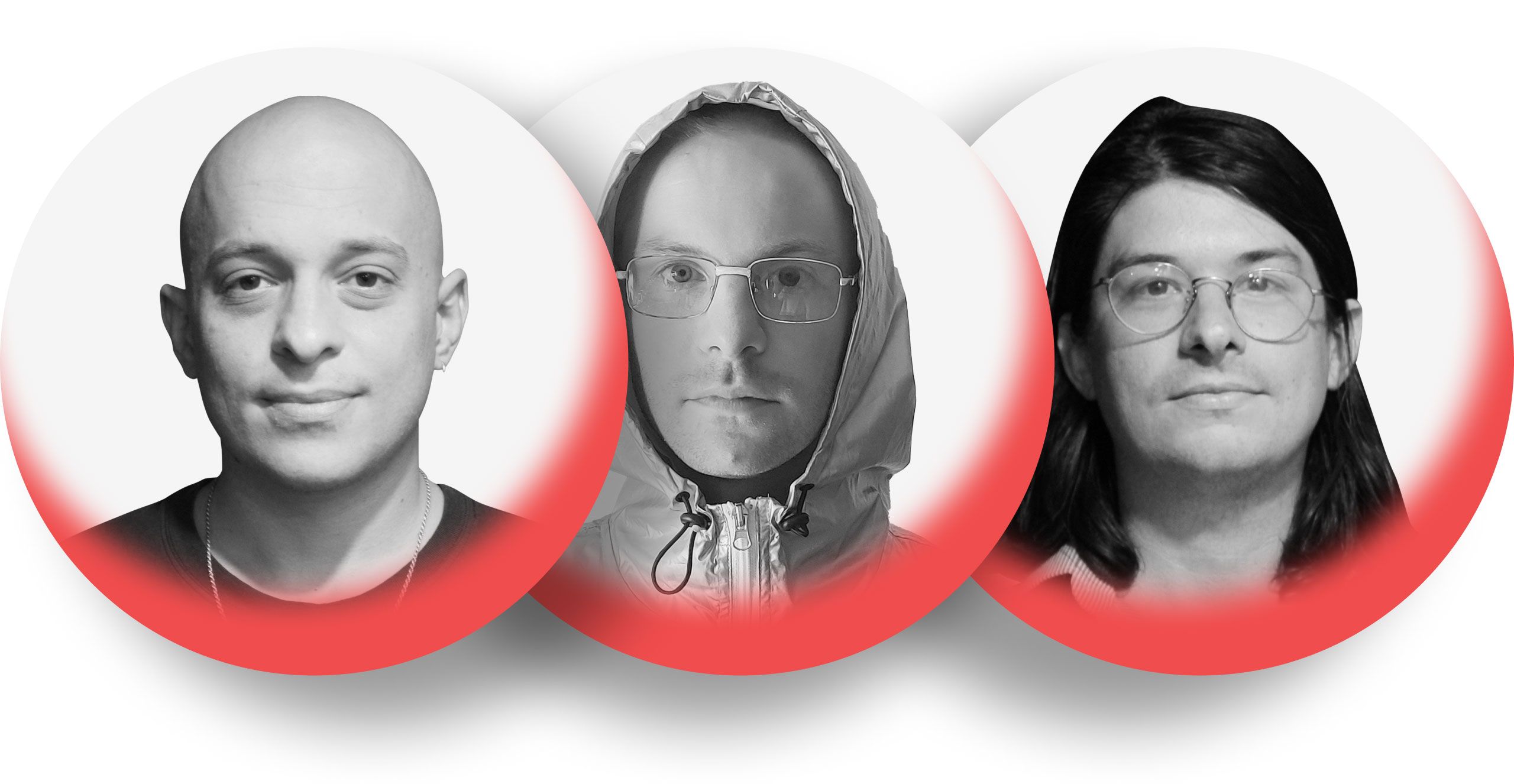
Blaine O’Neill (ZORA): How do you all know each other? How did the project start?
Mike Pollard: We all know each other through music. I met Jack in 2007 at the St. Louis Noise Fest. I was playing a show and Jack was doing sound at the venue there. I've known Eric for maybe eight or nine years through art and music stuff between New York and Toronto.
Last February, Jack and I were at McSorley's in New York, talking about NFTs because they were just hitting mainstream consciousness then, and we quickly started thinking about how blockchain and tokenization could produce an independent music ecosystem like the ones we come from. Eric and I were working on a freelance programming job together at the time, so we started prototyping Nina the next day.
BO: What does “protocol” mean to you? Why are you calling Nina Protocol a protocol, and how does that word signal some of your longer term ambitions?
Mike Pollard: We want to make a tool that can be used by anybody rather than something that people need permission to use. We don't necessarily want to editorialize people's music. We want anyone to be able to use the underlying Nina technology to publish their music.
If you take Web3 stuff seriously, it means that platforms are going to splinter. And so we think of any artist, label, fan or curator as being able to have their own platform on top of the protocol. What that means is that they have the ability to define permissions and have a curatorial umbrella. It can possibly be spread out all over the internet, our frontend isn't the main entry point. But there are still all these connections that are onchain, so these platforms aren't isolated islands. Nina presents as a platform right now, but that's kind of the "jumpstart phase" or something like that.
Eric Farber: In Web3, there's a lot of utopianism and promise for the future, but the reality is that right now things are really clunky and there's still a lot of work to be done. Taking the protocol approach awards agility for us and for the people using the Nina Protocol so that we can continue to grow, evolve and have a symbiotic relationship between use and need that allows things to be nebulous in a beneficial way.
Mike Pollard: We're building from these pretty simple primitives and starting with these fully onchain data structures that we see as being the building blocks of an equitable music ecosystem, a digital-native music ecosystem.
BERGSONIST
New York City, USA
"In French, protocol means a recipe. I think that [Nina] uses Protocol more like a tool. They're not yet defined because it will depend on how users adopt the tool and use it."
"It's been interesting to experiment with Nina. I know the founders and their history. They've been in the experimental music scene for a very long time. You can tell that their vision is not like other Web3 projects. It's very community and goal driven. They're not interested in just making money. That's what interested me. It's nice to see the experimental music scene in Web3 and being valued."
"The music that I released on Nina was mostly experimental that wouldn't fit into a genre. I wanted to experiment with my creative practice, which is not only music-focused, but also visual. The first tracks were more experimental with accompanying artwork."
BO: Do you see a future consortium of multiple stakeholders—like in the way that the W3C (World Wide Web Consortium) meets to decide on the future of web standards—deciding on how to best serve networked musicians, artists, and listeners? Is that something you could see happening with Nina, or with this project and a federation of other projects with similar goals?
Mike Pollard: There’s already some Telegram groups, Discords, and Slacks where people from different platforms discuss metadata standards for music. Catalog is the driver behind the main Telegram group. I think we definitely see that kind of collaboration being part of the future. As we get closer to taking Nina out of beta, there will be more space for community and stakeholder participation in the development of the protocol. Right now it's really just loose. People make requests or ask questions on the Discord. There have been a couple people who have gone into our code and made some requests or fixes or noted issues. But at this point, any community governance is really just chatting with us. There's not a structure set up for that yet, but in the future there will be.
BO: If you were to draw a picture of Nina, what would it look like?
Eric Farber: If we had a crayon and a piece of paper in front of us right now we'd be trying to illustrate Hubs, the most recent primitive that we've been working on. Hubs are basically autonomous instances of Nina where people can control and gate their own permissions. The drawing of Nina would be showing the way that hubs can all interact with each other. It might end up looking like a dandelion or something. The idea is that everyone can have their own node, but there could be content liquidity shared between them: a song can exist in many places or a collaborator can be part of many hubs. I think there'd be a lot of circles and a lot of lines.
Mike Pollard: Something that I've been thinking about recently is how the recommendation and exploration stuff that's prevalent now is based purely on phenotype: “this music sounds like this” or, “people who like stuff that sounds like this like stuff that sounds like this.” We think of Nina as being more about genetic relationships, thinking about Wikipedia or Discogs, this network that's like “over time, this is related to this,” “this comes from this,” “this is the product of these two people or this hub.”
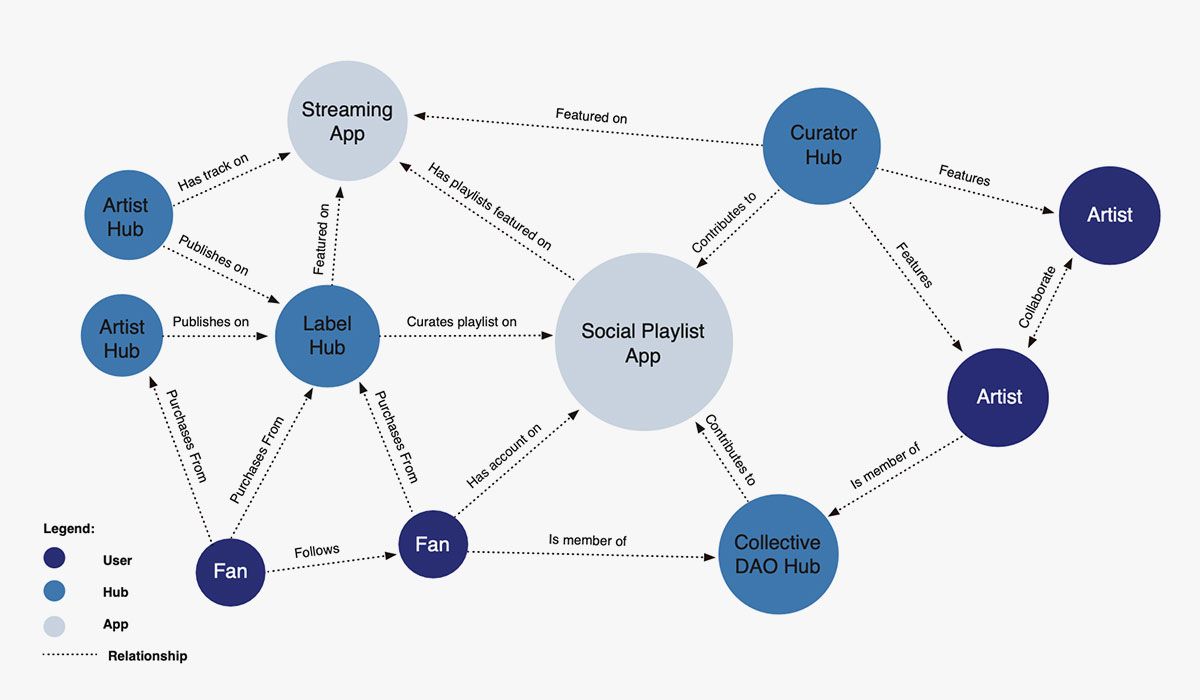
BO: So focusing on relationships as opposed to sound or aesthetic or genre?
Jack Callahan: More like focusing on the people over the actual music, because that's the genesis of where music comes from: people actually making, putting the music up, and collaborating.
Mike Pollard: There is no context of genre on Nina yet. It's something we've gotten some requests for, but we haven't thought of a way to do it right yet. It is the kind of thing that could be heavy handed.
Jack Callahan: Genre is a very loaded term.
Mike Pollard: There's this aggregator made by the people who did Hype Machine that has Nina stuff on it, futuretape.xyz, and they do automatic genre tagging which is pretty flawed, but also kind of funny and interesting.
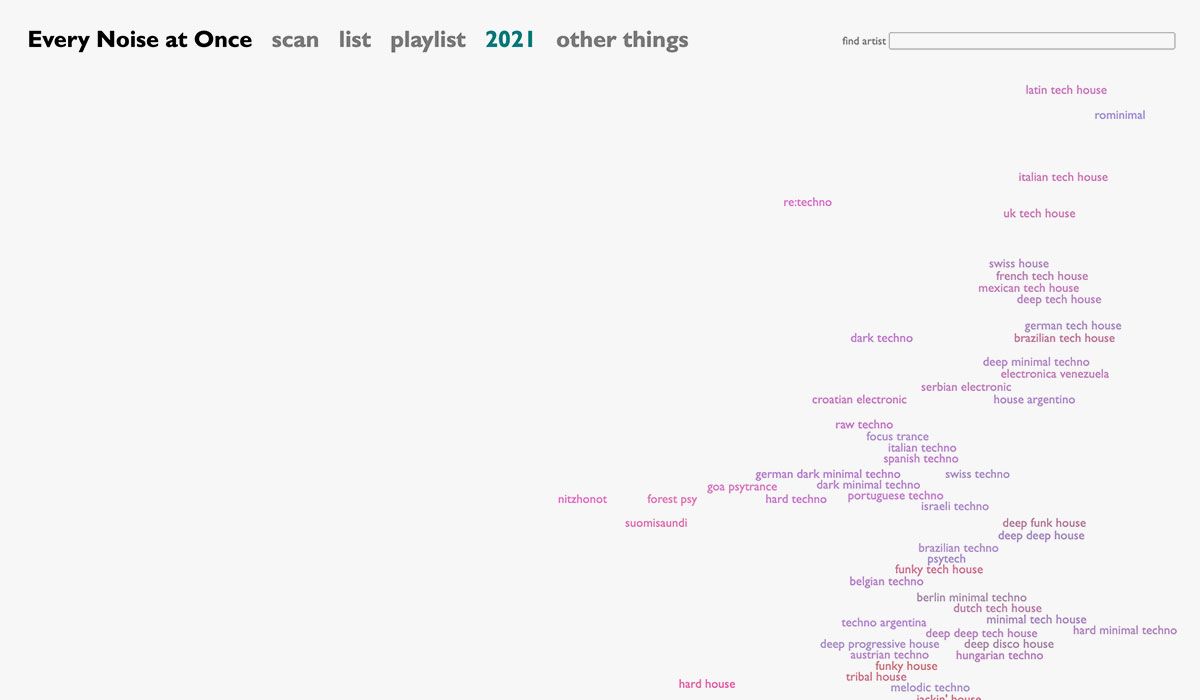
BO: There's this project by Glenn Macdonald, Every Noise at Once, that is a scatter plot of every genre on Spotify. It's a color-coded graph of hundreds of genre tags that you can explore and play. It would be interesting to see what a graph like that would look like for people. Relationships instead of genre classification.
Mike Pollard: It sounds silly, but music is made by people. Music, genres, scenes, these all come out of people working together, whether physically or not. We want to make something that can have those same kinds of roots.
Eric Farber: We're trying to make exploration/discoverability that focuses on context and collaboration.
WILTED WOMAN
Berlin, Germany
"Before COVID there were a few years where I was playing music live because you don’t make money off of releases, and gigs were my main source of income. I kind of hated it. Everyone should be getting income off of their work, whatever their work is. If your work is turning out records all day and then engaging with people online, you should absolutely be getting money for that."
"I'm just using it like SoundCloud basically."
"I’d describe my experience with Nina as chill but confusing. Ultimately chill. I like the Nina radio."
BO: Live performance and touring play a crucial role in the sustainability of a musician’s career and practice. During the pandemic I know many musicians struggled with the shutdowns and canceled gigs, majorly impeding their abilities to make music. How does the Nina Protocol approach “liveness”?
Mike Pollard: We've thought a bunch about “taper communities,” where Grateful Dead fans would record live shows and put them on tapes back in the day. Nowadays, you can find Dead & Co show recordings on archive.org. What if a band were to sanction their fans to do something like that in Web3?
Eric Farber: We've played around with a lot of ideas. There's this “taper” culture idea of having fans upload content and add the artists as collaborators so that they’re aware of other people's recordings. We've talked to event organizers about selling Nina releases and using them as tickets for a show. We had a show here at our office a while ago, and during NFT week we had a party at Montez Radio. We want to keep doing these IRL things. Nina is a service for the music community. It's not just online. Whatever “liveness” necessarily means, it's something that we maintain a lot of focus on.
Mike Pollard: Jack has also booked and recorded shows that the artist then puts up on Nina afterwards. Whatever we do online, we also want to be able to support people offline. Using Nina is a new way of releasing music and some people might not know how it fits into their released output. Publishing live material is sometimes a good place to start, because you can think about it peripherally to an album.
Jack Callahan: It's definitely something that doesn't need to fit within an artist’s catalog. The documentation of their art can exist externally to their official oeuvre.
BO: I've been talking to some artists using Nina and asking how they decide what to put up on the protocol, and how it relates to the other stuff that they release.
Jack Callahan: I'm excited to see their responses. We've done some short interviews gathering feedback about the Hubs, but also about how publishers use Nina. It varies, but a lot of it falls back on stuff that didn't fit anywhere else: B-sides or singles, stuff that doesn't doesn't work on a record.
Mike Pollard: I’m thinking about Soundcloud 10 years ago, when people would just put anything up—scraps, sketches, and then maybe take them down. Sounds were very actively published and then hidden or archived. That’s actually not possible in a Web3 protocol setting. On Bandcamp, you see people releasing single tracks as “pay what you want” or $2-$5 pricing. Nina is both in between and different from those two models. We’re really interested in what the new way of publishing music will look like, at scale. And I don't think it's really there yet.
Eric Farber: We're trying to remind people that you can make digitally native music. You don't have to make the online version of your LP or tape. It can be digital-first. Sometimes musicians fall down this rabbit hole of being like, “If I'm not pressing a 12 inch, it means that I fucked up,” but there's no real reason to think like that.
When you talk to the musicians, there's this weird aversion to embracing digital first. Part of our obligation to the music community is to give people the means to make digitally native releases that feel good to them.
Jack Callahan: The protocol’s permanence gives it weight. Nina users have expressed to me that for whatever reason it feels like a substantial thing when they upload, maybe because there is a commitment. You actually have to pay a small amount of money to upload it and you can't delete it.
Mike Pollard: There are two new aspects that Web3 music publishing brings. One, paying for storage, which you can think of as analogous to paying to have a record manufactured. You're paying for the resources that you use for the thing that you make available. Two, you can't delete or change the release. There's definitely a weight and a permanence to publishing which hasn't been fully digested yet. The new way of publishing music will be based on the fact that stuff is forever.
KIERAN DALY
Chicago, USA
"If a piece of mine would more appropriately function independent of [an album’s] context, then Nina is the best outlet for publishing it because it most directly presents a piece as a standalone artifact."
"Receiving full compensation for my work is also a significant factor contributing to my decision to publish on Nina, rather than receiving a small fraction of the given work's value for which I am compensated by outlets like Bandcamp. I look forward to eventually having the option to upload an album or collection of pieces as an album to Nina."
BO: Are there any historical or fictional references that guide you or inspire you?
Jack Callahan: We all grew up in the bloghouse scene era of 15 years ago and that network of online communities: blogs, curators, artists and labels were all connected via shared infrastructure.
Mike Pollard: Archive.org, Blogspot, Discogs...
Eric Farber: MySpace Top 8. I think the biggest inspiration for this project was just collecting records.
Mike Pollard: Ted Nelson and his writings about Project Xanadu. Nelson writes about hypertext—this recursive permanent relationship (which is an aspect of the blockchain that isn't explicitly about money and speculation).
Jack Callahan: The Irish monks in the 5th and 6th century who transcribed the bulk of the literature of antiquity. They’re one of the reasons we have any documents in the Western canon from before the Dark Ages.
SO DROVE
Los Angeles, USA
"I collected CDs, cassettes, and vinyl growing up. I got rid of my physical collection when I transitioned to MP3 and I still download MP3s."
"I think that making my work more limited and rare is better. Nina makes it seem special."
"I feel a kinship with Nina over other platforms—I have better feelings towards it than Spotify. I don’t trust Bandcamp since they've been bought. Nina doesn’t brand itself as an artist-forward platform but it actually is, which is rare in a time when everything is so exploitative.
BO: Would you say that we're living in a dark age for music online right now?
Eric Farber: Before working on Nina, I rarely had a conversation with anyone about discoverability or recommendation algorithms. Yet since working on this project, everyone seems really eager to talk about it. For example if an alternative to Spotify comes up, everyone has an opinion. I would never be like, “Hey, what do you guys think about algorithms?” But when we talk about algorithms through music, everyone has their two cents. I don't know if we're in a dark age, but dynamics are definitely being obfuscated from people.
It seems like people are having recommendation fatigue, streaming fatigue. There's so much music being suggested to us at every turn that we do this kind of passive playlist listening and become really disoriented. Whether that's good or bad, I don't know, but there's a general consensus that this disorientation in constant streaming is something that listeners have an innate bad feeling towards.
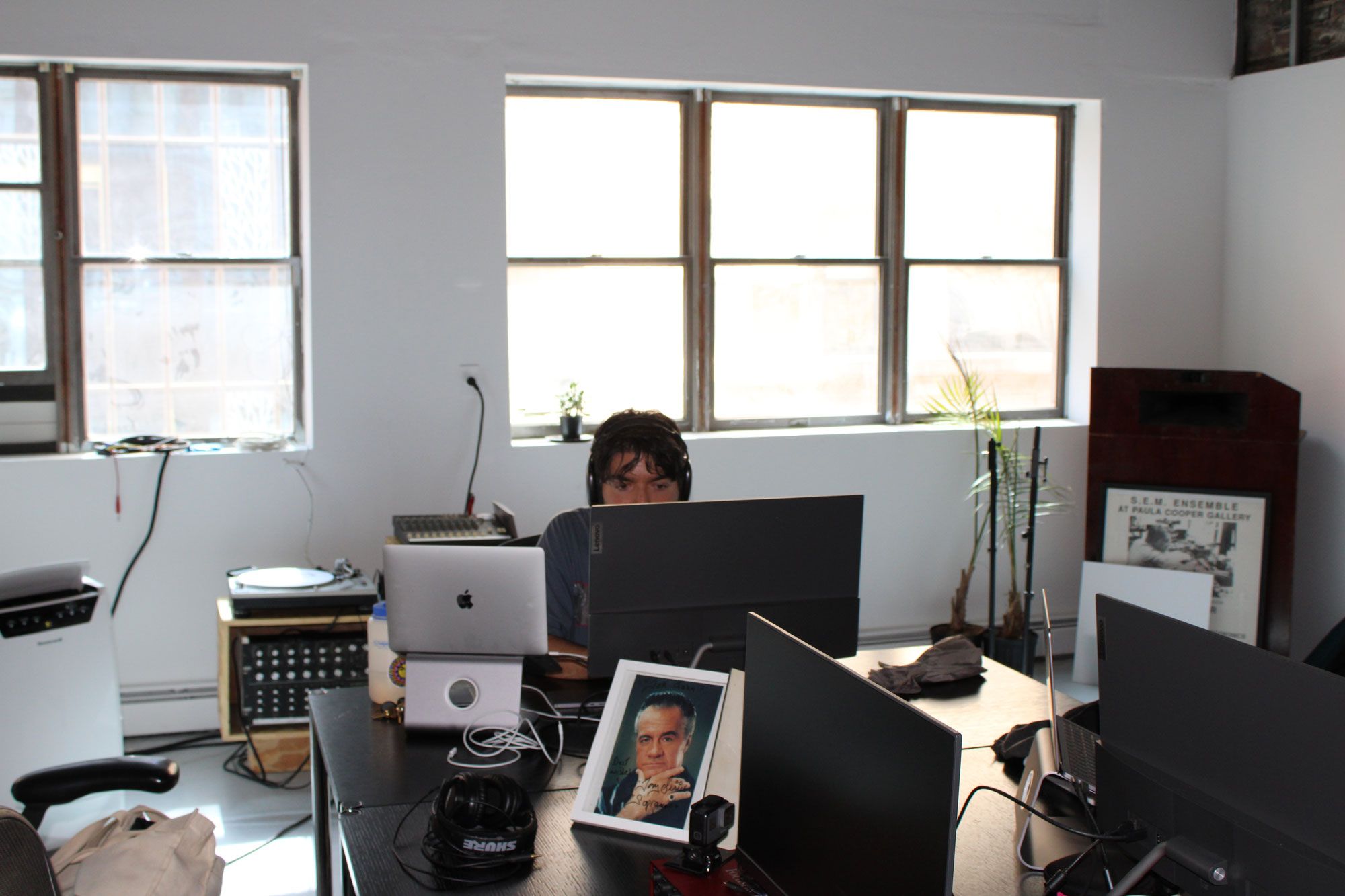
Mike Pollard: We might be living in a dark age of optionality or a dark age of context: there isn't that much of a difference between Spotify, Apple Music, Tidal, SoundCloud, Bandcamp. They do have their slight differences as you move further away from hardcore streaming, but you still have this platform-branded, discovery-driven, advertising-based paradigm. There are specific reasons why the platforms want you to hear certain things. And those reasons aren't in your best interest as a listener, they're in the best interest of the platform that's trying to capture your attention. So I would say there’s an appetite and an opportunity for something outside of that right now.
Eric Farber: I think we're at the precipice of a renaissance rather than a dark age.
Mike Pollard: Can you have one without the other?
Jack Callahan: Doesn't necessarily presuppose that we're in a dark age but it strongly suggests that we are...
Mike Pollard: During the pandemic, musicians were in a pretty unique position of both being totally screwed and made totally aware of it. This has resulted in shifting the general focus of musician discourse to these impossible conditions, over music itself. If the musician's mental space is being taken up by constant thoughts about their own precarity, that impedes their musical practice. That's also something that needs to be figured out.
Jack Callahan: Nina came not only from a place of being curious about this burgeoning use of blockchain, but also directly from us being interested in the state of independent music. It’s a pretty dismal state, economically, for independent musicians. Our driving force is making a more equitable environment for independent musicians to thrive, create, and live.
